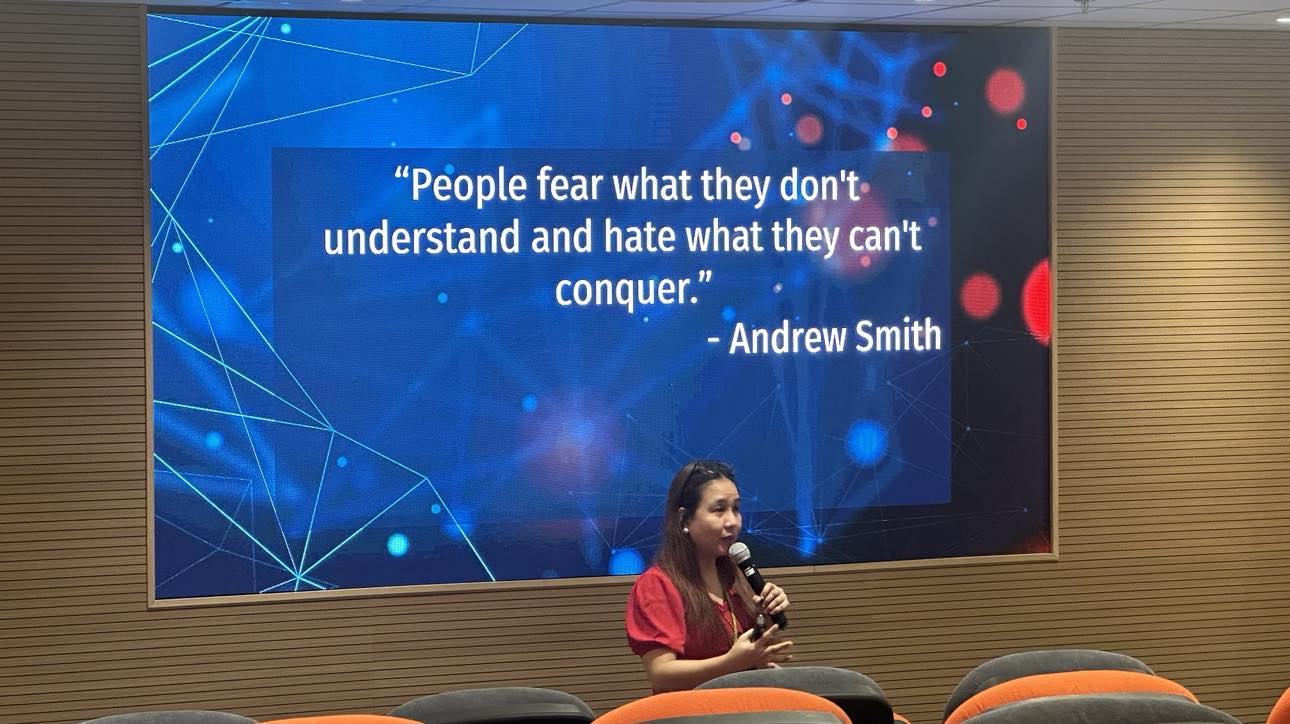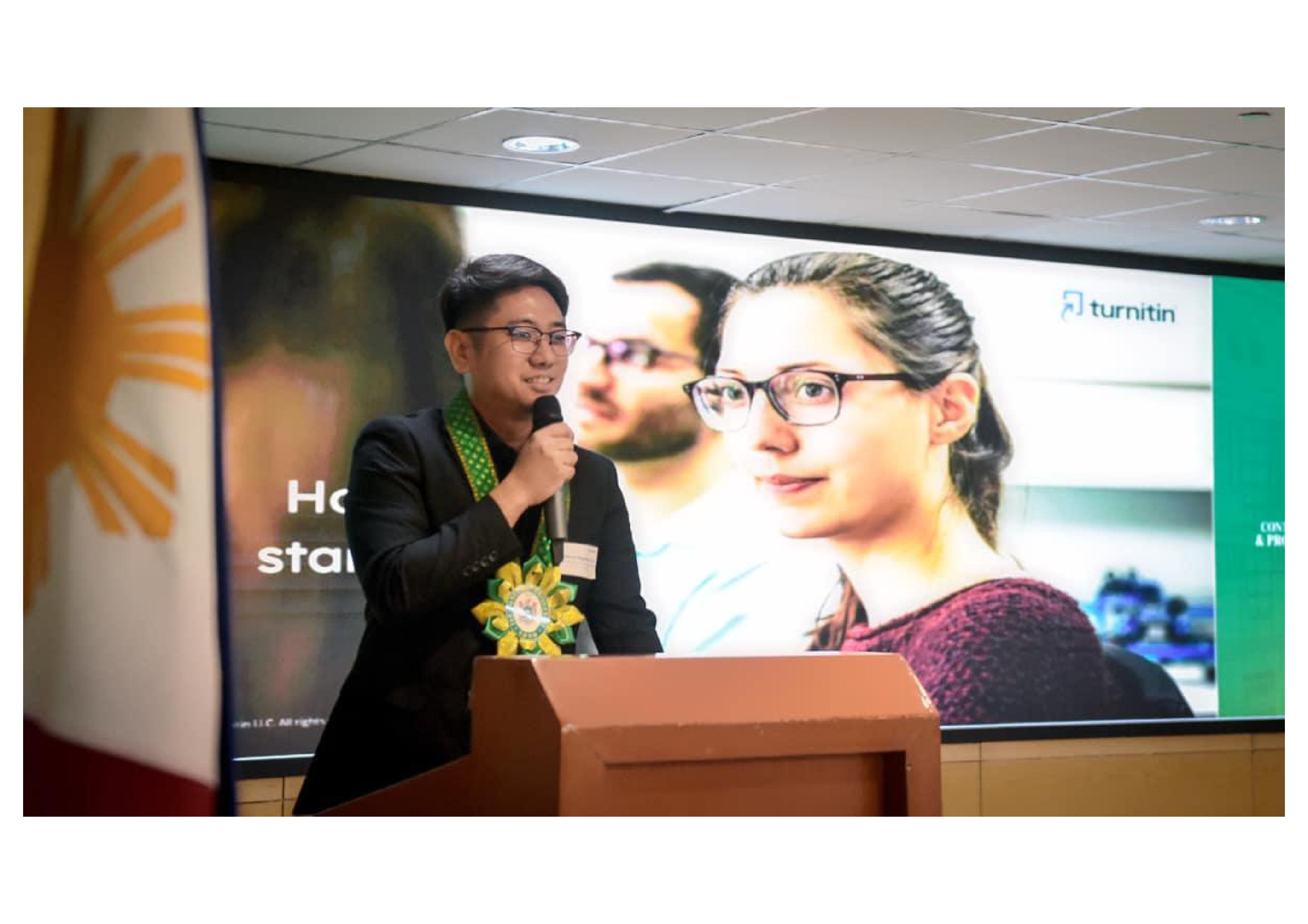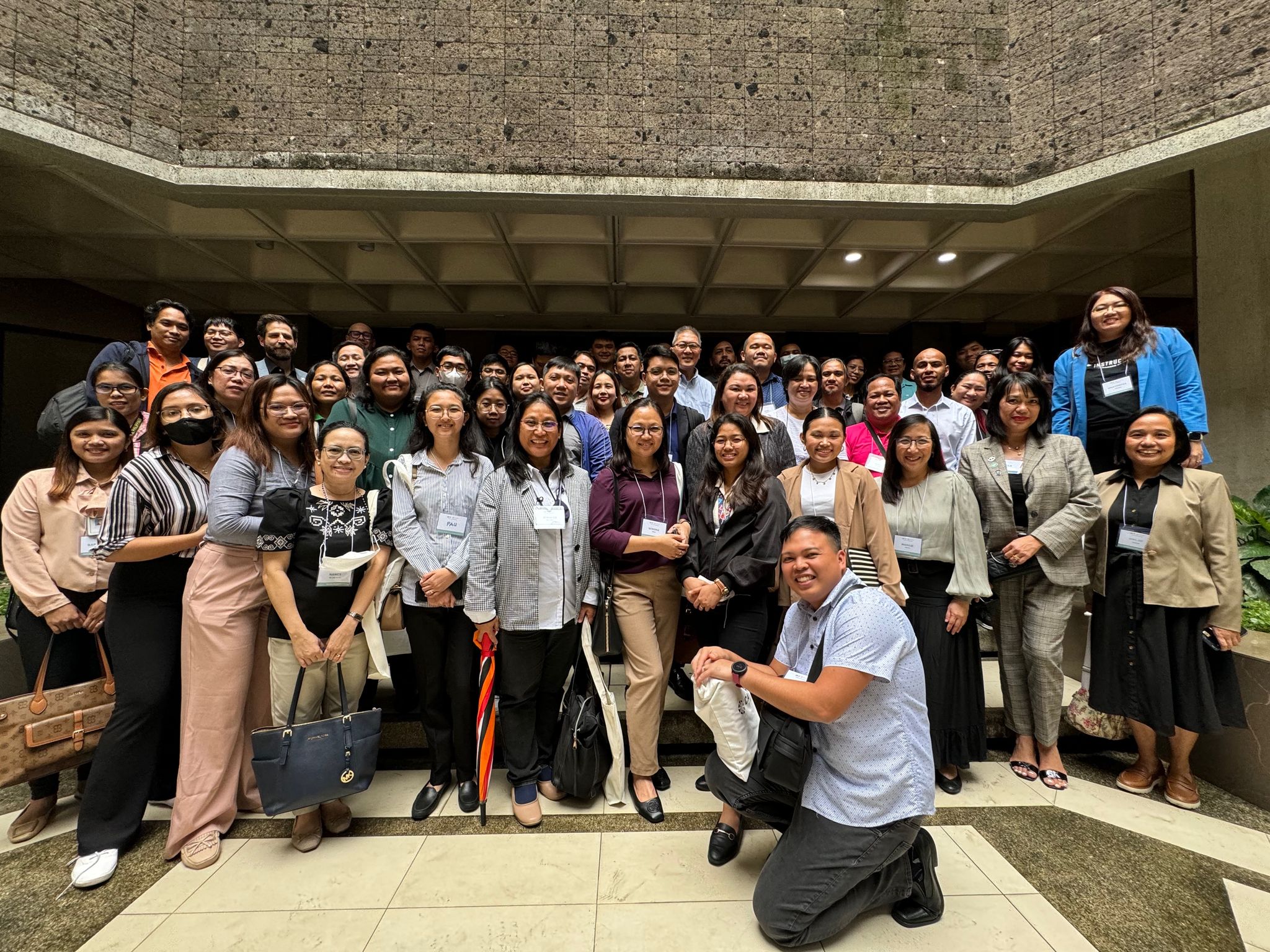Dir. Cathy Catamora during her presentation in the FEUture Center
“What does a 21st century classroom look like?”
Asked Catherine Catamora, director of Far Eastern University’s education technology office and speaker of this year’s 1st session of Course Refresher in Assessing and Facilitating Teaching-Learning last Sept. 15 on “Teaching with Technology: Enhancing Learning Experiences through Artificial Intelligence (AI)” tools in the classroom.
Using Mentimeter, an online presentation tool, FEU faculty members digitally submitted their answers real-time. In a colorful word cloud appeared words, such as innovative, creative, interactive, and technological.
Viewing these, Catamora asked: “”Is AI a form of technology?” The audience said: “yes.”
“Can it be a means to flicker some creativity?” The audience said: “yes.”
“Can it allow learners to engage with their fellow students?” The audience said: “yes..
In an ever-evolving world, education has no escape from modernization, but AI is usually deemed forbidden in the scholastic world. The ongoing debate whether or not it should be banned has been lingering in the minds of educators across the globe, waiting to be answered.
For the million-dollar question, are you going to allow the use of AI inside the classroom?
“It is better to use it alongside your students with your guidance rather than restricting them, but still employing it behind your back,” said Catamora.
Teachers can help manage and navigate their students’ use of AI. This will also create a spirit of trust between students and teachers.
One of its benefits is its ability to jumpstart one’s vision. Everyone needs a little push to kick off.
“Don’t deny its existence,” said Catamora.
To view AI as positive tools is to acknowledge their presence. Examine them by familiarizing these tools and trying them out as well.
“Explore them, don’t avoid them,” said Catamora.
Educators must also enroll themselves in AI courses, such as Synthesia, Quillbot, Fireflies, Timely, and the like for a wide array of helpful assistance.
On the concern of students submitting AI outputs, Catamora said nothing beats how well educators know their students to recognize their work. To allay this worry, FEU uses Turnitin in finding out the similarity index and deterring plagiarism—now with an AI writing detector to uphold academic integrity.
Any form of help to elevate student learning is welcome in FEU, may it be natural or artificial—with limitations as the institution vows to provide them with quality education through industry, innovation, and infrastructure.



